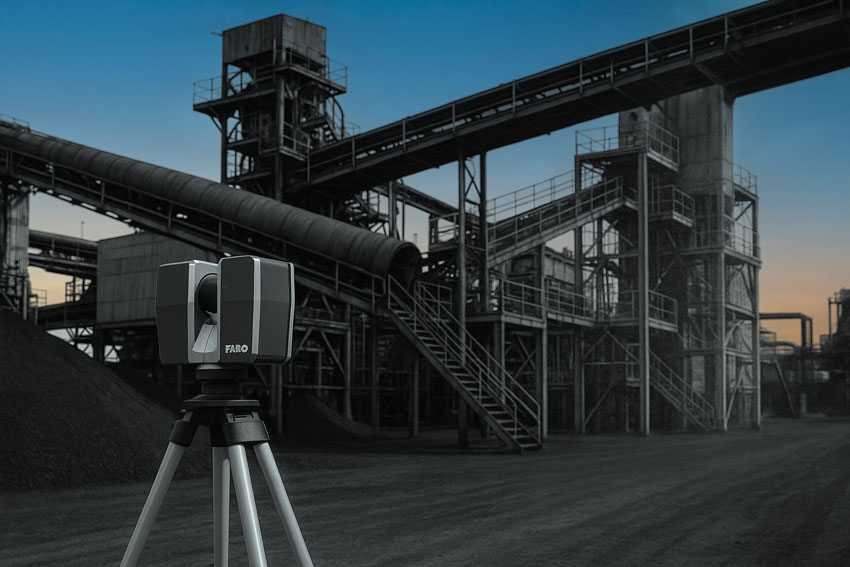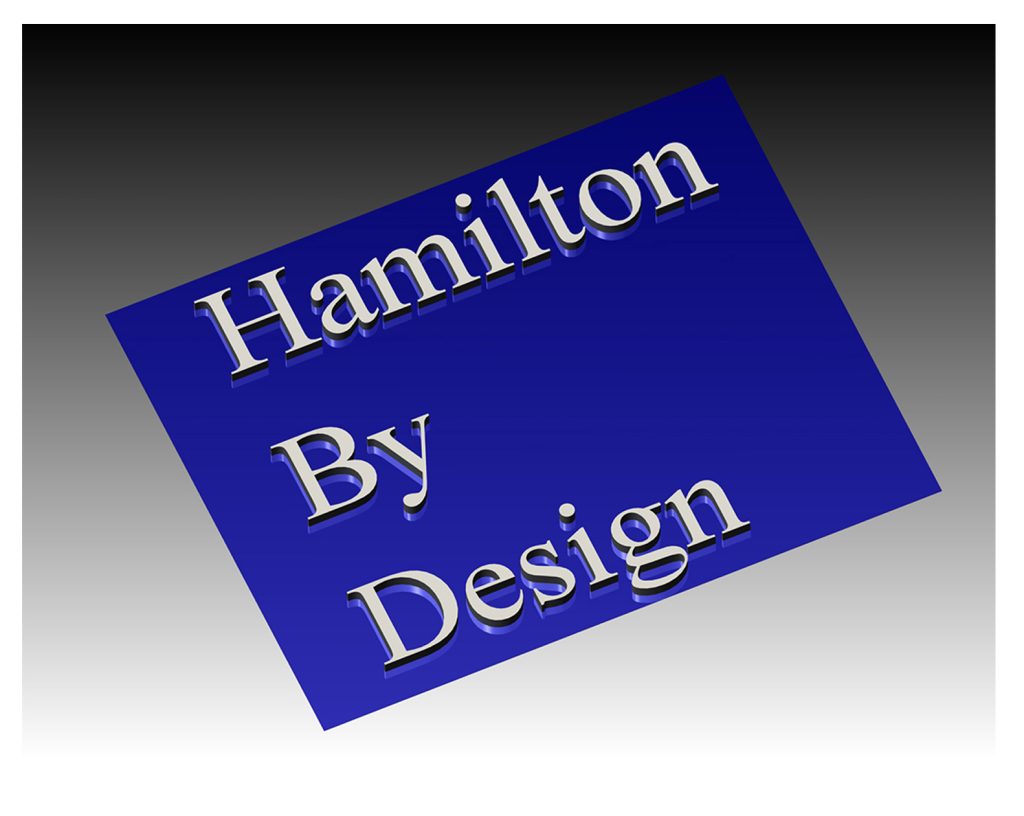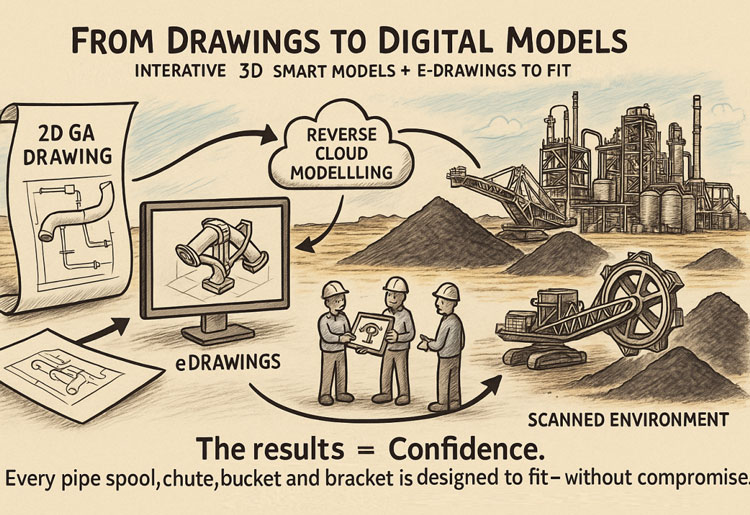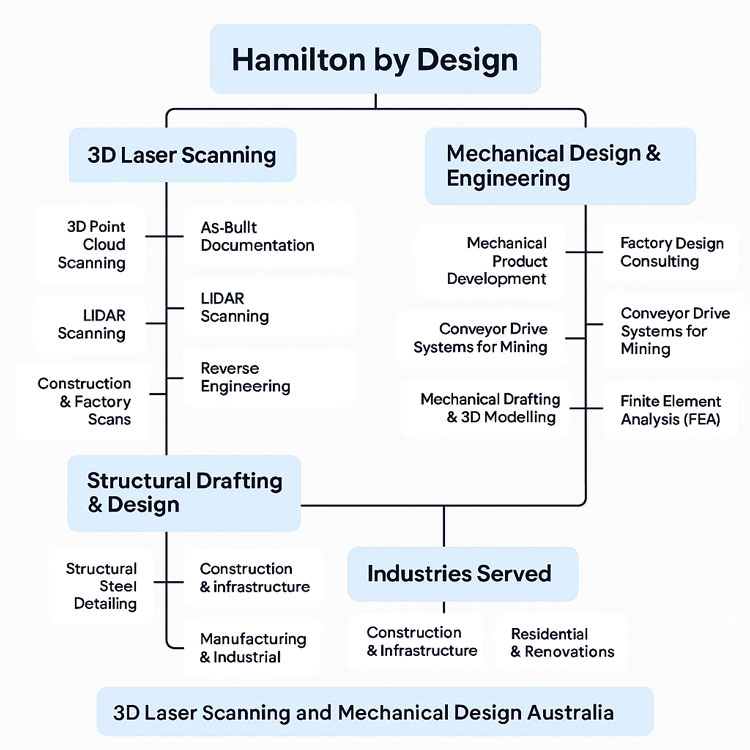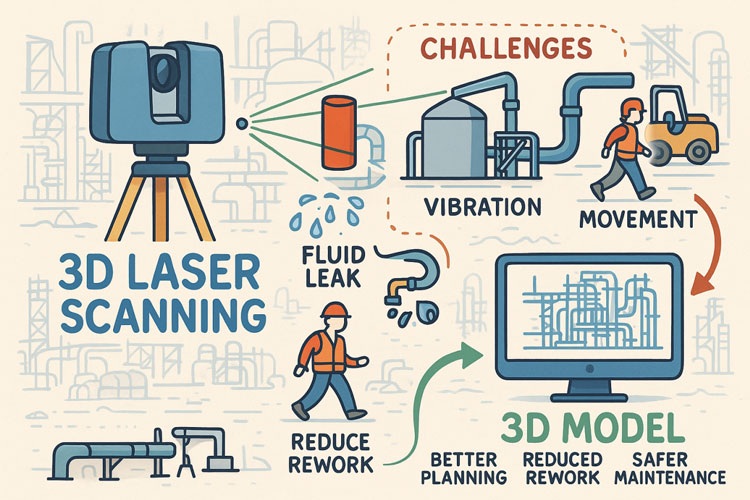Mechanical Plant Optimisation: Boosting Throughput, Reliability and Safety Across Australia
Industrial plants are under more pressure than ever to deliver higher output, reduce downtime and operate safely. Ageing equipment, inconsistent maintenance, and brownfield constraints often limit performance — but with the right engineering approach, even long-running plants can achieve major efficiency gains.
At Hamilton By Design, we specialise in mechanical plant optimisation using a powerful combination of engineering expertise, high-accuracy LiDAR scanning, precise 3D modelling, and practical redesign strategies that deliver measurable improvements.
If your goal is higher throughput, fewer breakdowns and safer shutdowns, this guide explains how mechanical optimisation transforms plant performance.
Why Mechanical Plant Optimisation Is Essential
Most processing plants — from CHPPs and quarries to manufacturing and power stations — suffer from the same long-term issues:
- Reduced throughput
- Conveyor misalignment
- Flow bottlenecks in chutes and transfer points
- Vibration, cracking and structural fatigue
- Outdated drawings and unknown modifications
- Premature wear and high maintenance costs
- Shutdown overruns due to poor fit-up
Optimisation tackles these issues using real engineering data, not assumptions.
Step 1: LiDAR Scanning to Capture True As-Built Conditions
As equipment ages, it moves, twists and wears in ways that drawings rarely capture. Our FARO laser scanners map a complete digital twin of your plant with ±1–2 mm accuracy, giving engineers:
- Full geometry of structural frames
- Wear patterns inside chutes
- Deflection in platforms, conveyor trusses and supports
- Misalignment in pipes, pulleys and mechanical drives
- Clash risks for future upgrades
This becomes the foundation of all optimisation work — ensuring upgrades fit first time.
Step 2: 3D Modelling & Engineering Redesign
Hamilton By Design converts point-cloud data into SolidWorks models to identify optimisation opportunities such as:
- Reprofiling chutes for smoother flow
- Strengthening or realigning structural members
- Repositioning pumps or motors
- Correcting conveyor and drive alignment
- Redesigning access platforms for maintenance
- Improving liner selection and service life
Every model is fabrication-ready, eliminating costly rework during shutdowns.
Step 3: Material Flow & Conveyor Performance Improvement
Flow constraints are one of the biggest sources of lost production. Through engineering review, modelling and experience, we address:
- Impact zones causing excessive wear
- Restrictive chute geometry
- Poorly performing transfer points
- Belt-tracking issues
- Flow blockages
- Inefficient material transitions
These improvements often deliver immediate gains in throughput and reliability.
Step 4: Mechanical Integrity & Reliability Assessments
We also perform condition assessments to understand the root causes of downtime:
- Vibration analysis
- Cracking and corrosion detection
- Bearing, gearbox and pulley assessment
- Thermal/overload risks
- Misalignment and load distribution issues
This supports predictive maintenance and informed upgrade planning.
Step 5: Shutdown Planning & Upgrade Execution
By combining scanning, modelling and mechanical design, we ensure that every upgrade:
- Fits perfectly into existing brownfield spaces
- Reduces time on tools
- Eliminates site modifications
- Improves safety during installation
- Delivers predictable shutdown timelines
Clients commonly see ROI within the first shutdown cycle.
Benefits of Mechanical Plant Optimisation
When optimisation is done properly, plants experience:
✔ Measurable throughput increases
✔ Longer equipment life
✔ Reduced wear and maintenance costs
✔ Safer operation and shutdown execution
✔ Accurate documentation for future projects
✔ Extended reliability of mechanical systems
With the right engineering support, even ageing plants can operate like new.
Serving Clients Across Australia
Hamilton By Design supports mechanical plant optimisation projects across:
Sydney, Newcastle, Hunter Valley, Central Coast, Bowen Basin, Surat Basin, Pilbara, Perth, Adelaide, Melbourne and regional Australia.
We work across mining, CHPPs, quarries, ports, power stations, manufacturing and heavy industrial sites.
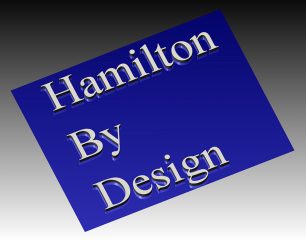
Ready to Optimise Your Plant?
If you want higher throughput, better reliability and safer operation, mechanical plant optimisation is the smartest investment you can make.
Or reach out directly for a project discussion.
Hamilton By Design — Engineering Certainty for Complex Plants.



